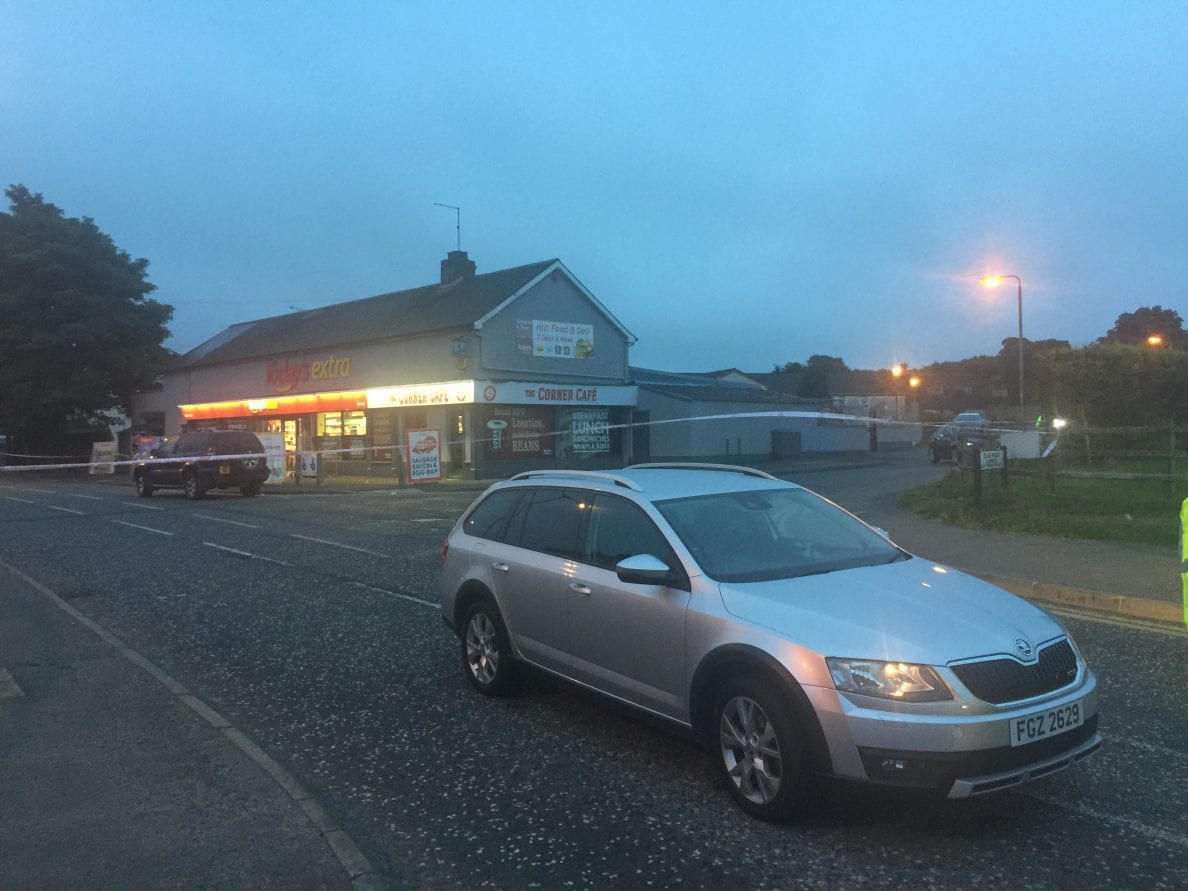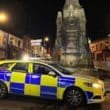
A Co Armagh fireman who knocked down and killed an 89-year-old grandmother has been warned he “should not rule out the prospect of going to jail” tomorrow (Monday).
Adjourning passing sentence on John Desmond Kinsella, Judge Neil Rafferty QC told the 37-year-old: “There are many matters in this case that I want to give consideration to but you should not rule out the prospect of going to jail on Monday.”
Two months ago Kinsella, from the Clay Road in Keady, entered a guilty plea to causing the death of 89-year-old Claire Coyle by driving dangerously on the Victoria Road/Clay Road in Keady on 14 August 2018.
In an agreed basis of plea document submitted to the court, prosecution QC David McDowell outlined at just before 6.30pm that day Kinsella parked his Toyota Landcruiser jeep outside McGrane’s shop on Victoria Street and got out to speak to his friend.
When that other driver left, Kinsella got back into his vehicle and reversed backwards in order to turn into the Clay Road just over 30 feet behind him but tragically, he collided with Mrs Coyle who had been slowly crossing the road behind him.
A video of the incident was played on Friday at Newry Crown Court, sitting in Antrim, clearly showing the large jeep reversing at speed and knocking Mrs Coyle down, seeming to make a second movement backwards just a couple of seconds after the initial impact.
It also shows Kinsella, a part-time fireman for 18 years, immediately getting out of his car and kneeling down beside the fatally injured pensioner before others run to the scene to help.
Mrs Coyle, described by her daughter as having been “mentally sharp and in good health for her age”, was taken to Craigavon Area Hospital where “her low level of consciousness was suggestive of a serious head injury” and, sadly, she was pronounced dead at 8.20pm that night.
Police who arrived at the scene spoke to Kinsella and he admitted he had knocked her over, telling officer he “had not seen her”.
The scene and CCTV footage was examined by Damien Coll, a vehicle collision expert, who calculated it took Kinsella 4.2 seconds to reverse 9.765 metres and Mr McDowell said the engineer “performed a similar manoeuvre at what he considered to be a safe speed – took him 11 seconds between the same points”.
The senior lawyer said Mr Coll had also been asked to consider if it would have been possible for Kinsella to see Mrs Coyle in his mirrors and had concluded: “Depending on the relative positions of the Toyota car, the pedestrian and, in particular, the driver’s head position when seated in the Toyota car, the pedestrian may not have been visible in any of the mirrors when the driver commenced to reverse the Toyota car.”
“The prosecution is therefore unable to suggest that the reason Mr Kinsella struck Mrs Coyle was a failure to look in his mirrors before beginning to reverse,” said Mr McDowell.
During police interviews three days later, Kinsella told police that he would have checked his mirrors but that the view in the central rear-view mirror “wasn’t great due to the spare tyre partially covering the window”.
Kinsella said he thought he had hit a child’s toy or a ball or perhaps a bike so he looked but couldn’t see anything and “actually went to go back again but someone shouting stopped him and he got out and saw Mrs Coyle lying on the ground”.
It was Kinsella who phoned for the ambulance, describing himself as being in a panic, thinking “What have I done?”.
“He later remarked that it was a small town and he would see the family every day,” the court heard.
Mr McDowell said he also explained how he had carried out the same manoeuvre many times in the past and that it was “commonly done by other persons in the town….he just hadn’t seen her”.
The part-time fireman was further interviewed four months later in February and accepted that he had “probably not” used a safe reversing speed and when asked to comment on his driving, he described it as “poor”.
“The driving can be categorised as dangerous as the reversing manoeuvre was conducted too quickly and, accordingly, without regard for vulnerable road users,” said Mr McDowell, who also conceded that, while dangerous, there were no other aggravating factors in the case.
Defence QC Patrick Lyttle said while a sentencing hearing “by its very nature” concentrates on a defendant, he wanted to make it clear that both he and Kinsella were “mindful of the grief and distress” of Mrs Coyle’s family.
He submitted the nature of the “very unusual case” was such that had Kinsella taken it to trial “there would have been a very real chance of an acquittal of dangerous driving,” agreeing with Judge Rafferty that Kinsella had entered a guilty plea “as a well motivated member of society who didn’t want a trial in this particular scenario”.
Mr Lyttle said Kinsella, who has a “totally unblemished character”, has shown “significant insight and remorse for the devastating impact” for the family of Mrs Coyle.
Adjourning the sentence until Monday, Judge Rafferty said “there is little else that will occupy my weekend but thinking about this matter”.






